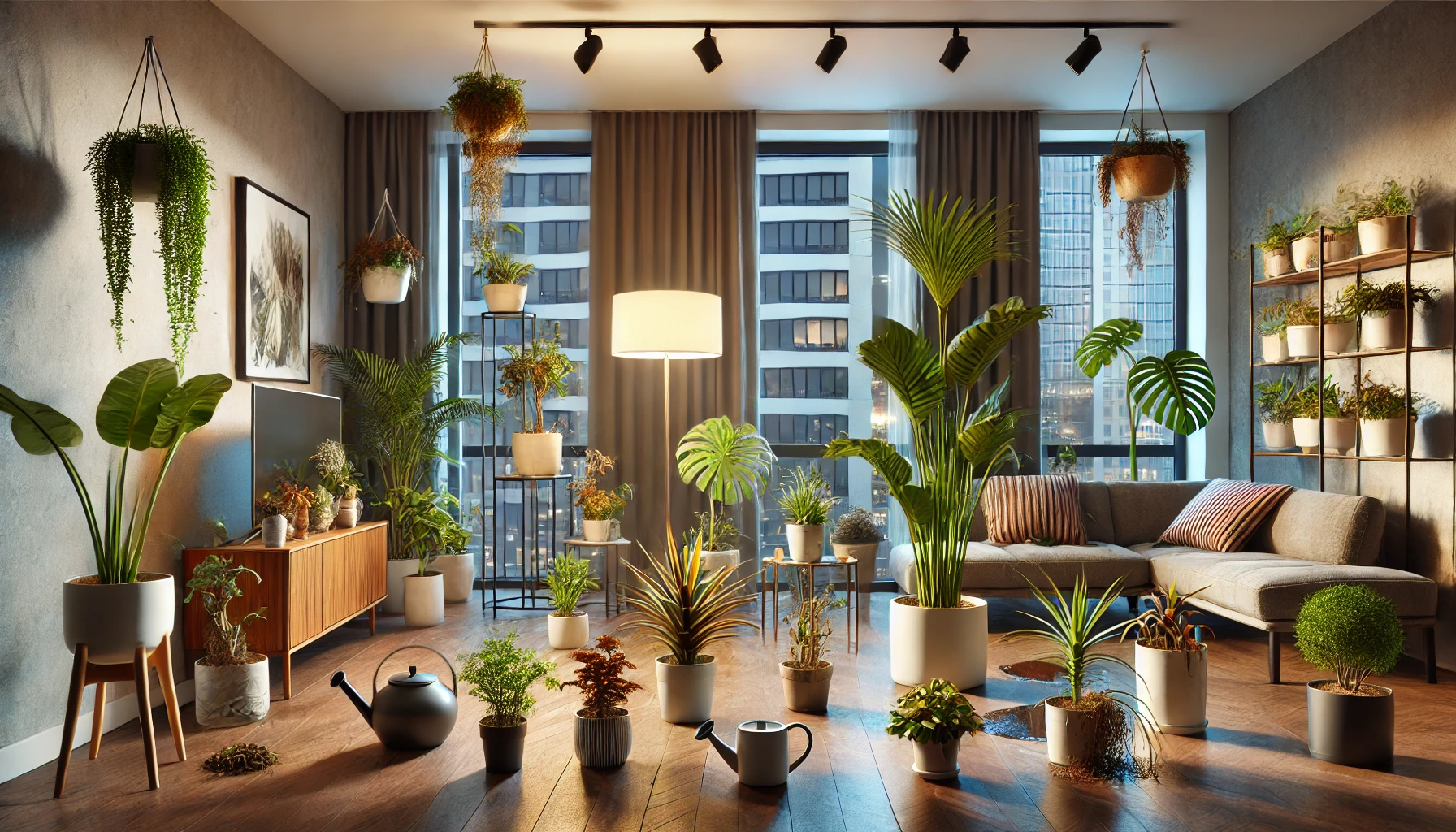Growing exotic plants in small apartments is both rewarding and challenging. These beautiful species can bring color, energy, and a sense of calm to any indoor space. However, many plant lovers unknowingly make mistakes that hinder plant growth or even cause their precious greenery to die. In this guide, we’ll explore the 7 most common mistakes made when growing exotic plants in small apartments—and how to avoid them.
1. Overwatering in Low-Light Conditions
One of the biggest mistakes indoor gardeners make is overwatering, especially in small apartments where airflow is limited and sunlight can be minimal.
Why It’s a Problem:
- Excess water accumulates in the soil, causing root rot
- Mold and fungus gnats may appear
- Soil takes longer to dry in areas with low light and poor air circulation
How to Fix It:
- Only water when the top inch of soil feels dry
- Use well-draining pots with drainage holes
- Place pots on saucers with pebbles to avoid standing water
2. Choosing the Wrong Plant for Your Environment
Not all exotic plants are created equal. Some thrive in low light; others need humidity or constant warmth.
Common Mismatch Examples:
- Putting a Bird of Paradise in a dark corner
- Keeping a Calathea near a heat vent
- Growing Alocasia Polly in dry air
Solution:
Do your research before buying. Match your space’s lighting, temperature, and humidity with the plant’s natural needs.
3. Ignoring Humidity Levels
Many exotic plants come from tropical climates and struggle in the dry air of apartments—especially those with air conditioning or heaters running.
What Happens:
- Leaves turn brown at the edges
- Plants lose their vibrancy and wilt
- Growth slows or stops altogether
How to Fix It:
- Use a humidifier to maintain 50–60% humidity
- Mist leaves lightly (but don’t soak them)
- Group plants together to increase ambient moisture
4. Using the Wrong Soil Mix
Another common error is planting exotic species in generic potting soil, which often retains too much water and lacks nutrients.
Effects:
- Poor drainage leads to fungal issues
- Roots can’t breathe or absorb nutrients effectively
What to Use Instead:
- For tropical plants: mix of peat moss, perlite, orchid bark
- For succulents: sandy, fast-draining soil
- Add activated charcoal to keep soil fresh in small pots
5. Not Providing Enough Light (or Providing Too Much)
Lighting is a make-or-break factor for exotic plants. Too little light causes weak, leggy growth; too much direct sunlight can burn delicate leaves.
Signs of Poor Lighting:
- Leaves turn yellow or pale
- Plant leans toward the window
- Slow or no new growth
Tips:
- Use grow lights in dark rooms or for winter months
- Rotate plants weekly for even growth
- Avoid placing shade-loving plants in direct sunlight
6. Crowding Too Many Plants Together
While it’s tempting to build your own mini jungle, overcrowding can lead to several problems.
Risks of Overcrowding:
- Poor air circulation
- Spread of pests and diseases
- Difficulties in accessing each plant for care
Better Approach:
- Leave at least a few inches between pots
- Use vertical shelving or hanging planters
- Regularly prune and rotate plants
7. Forgetting to Feed the Plants
Even in small spaces, exotic plants still need nutrients to grow. Many plant owners forget to fertilize—or overdo it.
Signs of Under-Fertilizing:
- Weak or slow growth
- Pale leaves
- No flowering (for blooming species)
How to Fertilize Properly:
- Use a balanced liquid fertilizer diluted to half strength
- Feed once a month during growing season (spring and summer)
- Avoid fertilizing during dormancy (fall and winter)
Final Thoughts: Learn and Grow With Your Plants
Making mistakes is part of every plant parent’s journey—especially with exotic species that can be a little more demanding. But by understanding these common pitfalls and adjusting your care routine, you’ll be able to grow healthier, happier plants that thrive in even the smallest of apartments.
Start simple, be observant, and enjoy the process. With patience and consistency, your indoor space can become a vibrant, green retreat.
